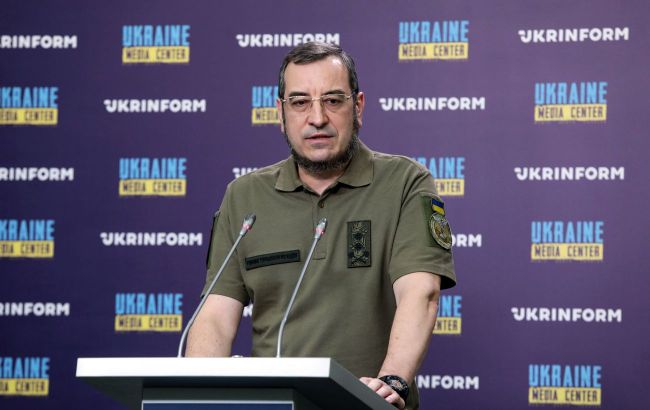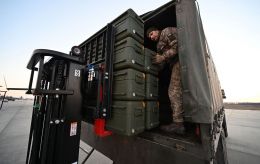Russia begins serial production of aerial bombs with a 200‑km range: Details from intel
 Photo: Vadym Skibitskyi, Deputy Head of the Defense Intelligence Directorate of the Ministry of Defense of Ukraine (Getty Images)
Photo: Vadym Skibitskyi, Deputy Head of the Defense Intelligence Directorate of the Ministry of Defense of Ukraine (Getty Images)
Russia has moved to serial production of new guided aerial bombs capable of striking targets at distances of up to 200 kilometers, states Deputy Head of the Defense Intelligence of the Ministry of Defense of Ukraine (HUR), Vadym Skibitskyi, during the RBC‑Ukraine forum Energy that keeps Ukraine running.
According to him, Russian developers have improved so‑called universal planning and correction modules (UMPK), which are fitted to conventional aerial bombs weighing 250, 500, 1,500 and 3,000 kilograms. This gives the munitions guidance and greatly increases their range of use.
"Indeed, during September–October the Russian Federation was developing — and has now moved to sequential combat experimental use of — aviation bombs with new control modules. They expect that the range and combat radius of such bombs will be about 200 kilometers,” Skibitskyi said.
A HUR representative emphasized that the first strikes with the new munitions have already been recorded on Dnipro and other Ukrainian cities. According to military intelligence, Russia is also attempting to improve these systems’ resistance to Ukrainian electronic warfare measures.
Skibitskyi confirmed that in open sources the new bombs may appear under the names Grom-1 or Grom-2.
"The name may vary — Grom-1, Grom-2. We are saying that the combat radii for the use of such bombs will be 150–200 kilometres. According to our data, one of their most recent tests reached a distance of 193 kilometers," he explained.
According to Ukrainian intelligence assessments, Russia is already moving into serial production of these weapons, which increases the aerial threat to frontline regions and major Ukrainian cities.
New Russian aerial bombs
At the beginning of October, Russia launched a KAB (guided aerial bomb) at Dnipro. Shortly before that, the Air Force had warned that enemy tactical aviation had deployed guided aerial bombs near the border of Dnipropetrovsk and Zaporizhzhia regions.
In addition, since the start of the full-scale invasion, the Russian forces used guided aerial bombs for the first time to strike Mykolaiv. This occurred on October 16.
Over the past weekend, the Russian army carried out a KAB strike on Lozova in Kharkiv region. Authorities reported that the strike involved a new modified guided aerial bomb — the UMPB‑5R (jet type), which covered an estimated distance of 130 km. It is worth noting that the distance from Lozova to the frontline exceeds 100 km.
Today, the Air Force warned of a KAB heading toward Poltava region.

